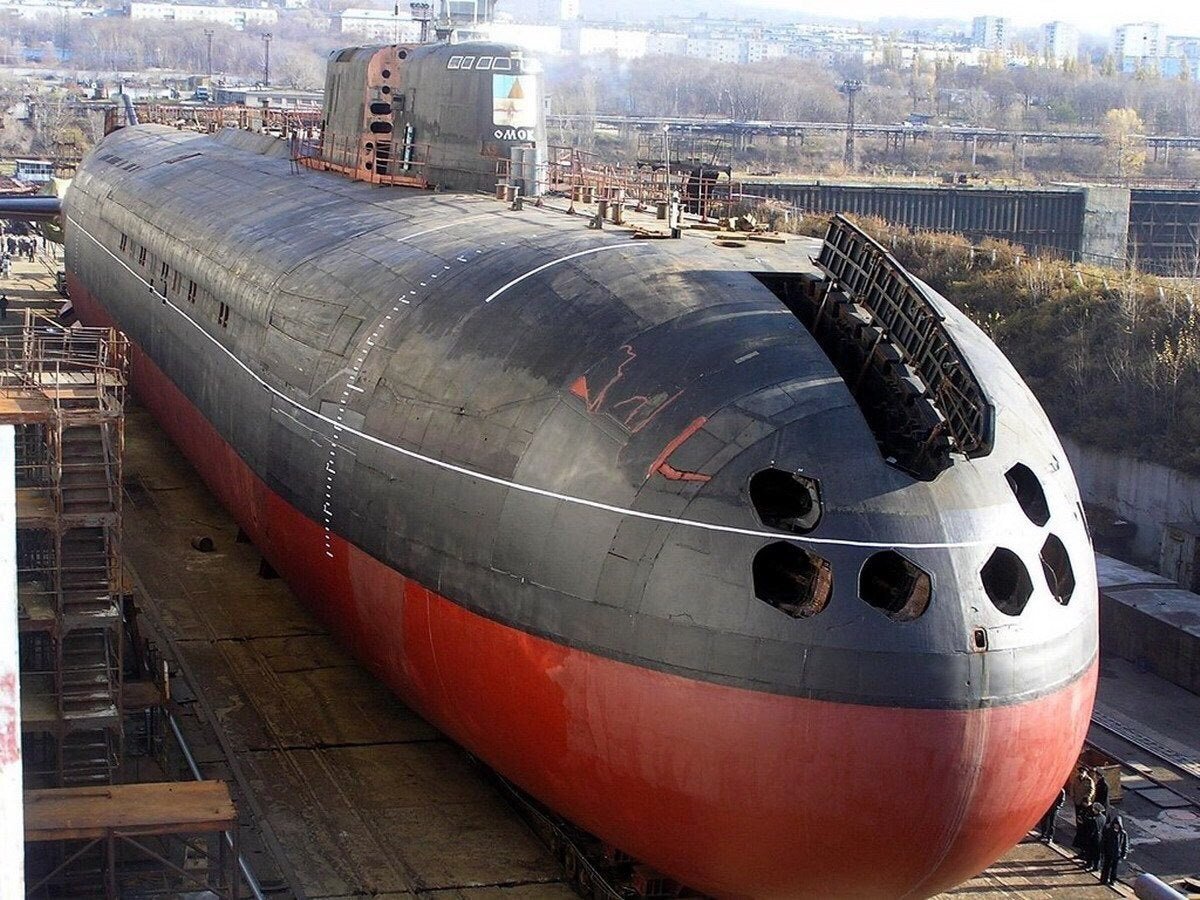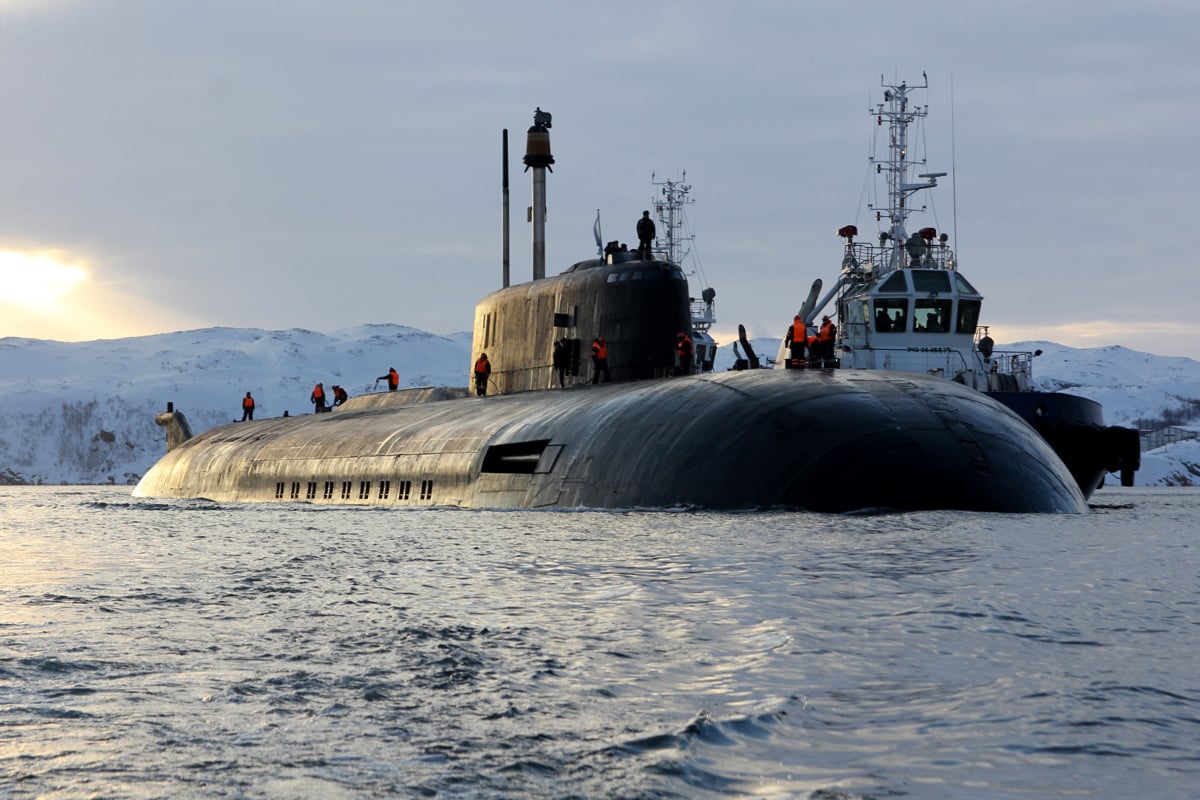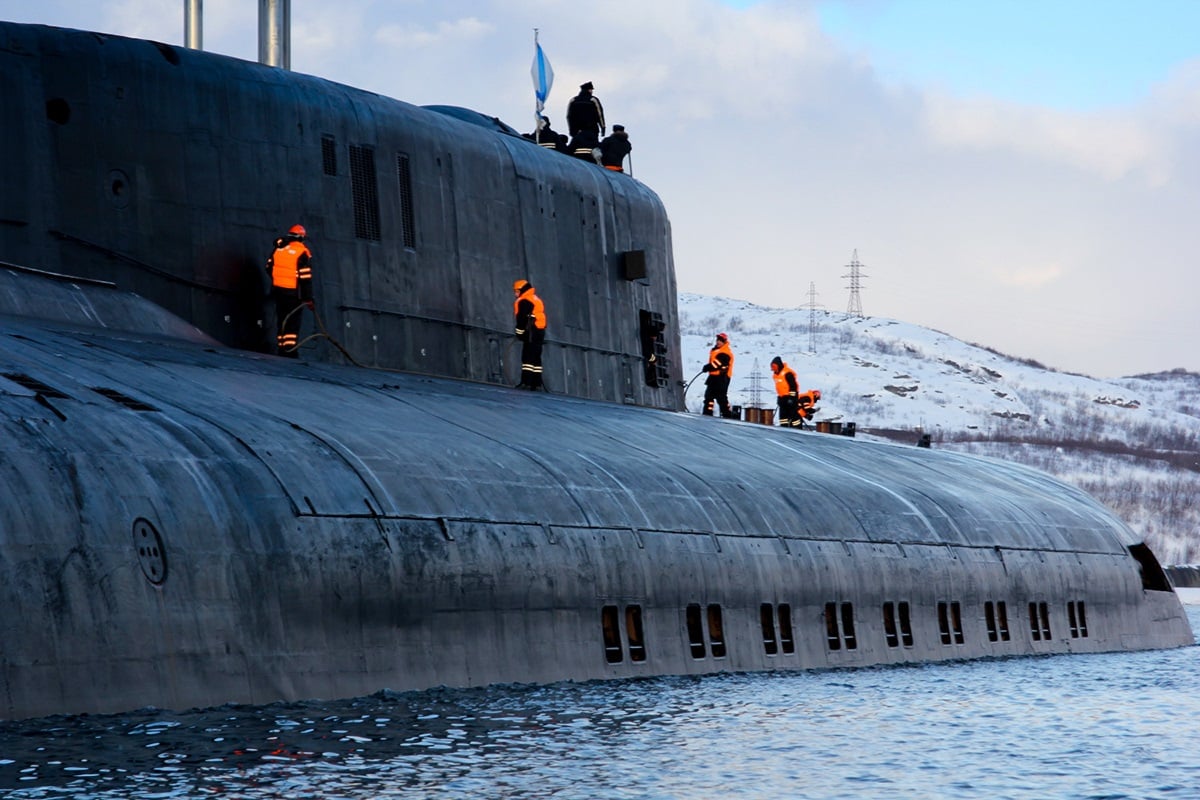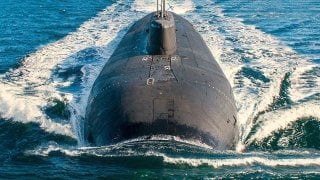Oscar II-Class Submarine: Russia's Ultimate Aircraft Carrier Killer Sub
The Soviet Union developed the Project 949 Granit and Project 949A Antey submarines, known as the Oscar I and Oscar II classes, to counter U.S. Navy carrier battle groups during the Cold War.
Summary and Key Points: The Soviet Union developed the Project 949 Granit and Project 949A Antey submarines, known as the Oscar I and Oscar II classes, to counter U.S. Navy carrier battle groups during the Cold War.

-These nuclear-powered cruise missile submarines were designed to destroy American aircraft carriers with their formidable SS-N-19 Granit missiles.
Most Important Point: The Oscar II-class, introduced as a successor, features an upgraded electronic system, enhanced maneuverability, and carries 24 Granit missiles. Despite being powerful assets, the class is most infamously known for the tragic sinking of the Kursk in 2000, which resulted in the loss of over 100 crew members.
During the Cold War, the Soviets developed the Project 949 Granit and Project 949A Antey nuclear-powered cruise missile submarines to gain an advantage over their American counterparts. Until the American-made Ohio-class ballistic missile ships were converted to carry cruise missiles in the early 2000s, the Soviet-era vessels remained the largest cruise missile submarines in service across the globe. They were designed to attack and destroy U.S. Navy surface ships - with the hope that in a war, they would find and sink American aircraft carriers.
A brief History of the Oscar-Class Submarines:
Designated by the North Atlantic Treaty Organization (NATO) as the Oscar I and Oscar II submarines, the Granit and Antey-class ships were first introduced in the 1970’s.
Each ship in these classes was constructed to counter NATO carrier battle groups using sophisticated weaponry. In order to sport such an array of armaments, the Oscar vessels were built to be quite hefty. Each of these SSNs measures more than 154 meters in length and displaces roughly 12,500 tons while surfaced.
Introducing the Oscar II-Class:
The Oscar II-class was developed as a successor variant to the Oscar I class. Out of the 19 planned boats, only 11 were ever completed at Severodvinsk. These submarines are slightly longer than their predecessors with a displacement of about 24,000 tons.

The Oscar II’s double-hulled design is divided into ten primary compartments. Additionally, this class of submarines is fitted with an upgraded electronic system and an enlarged fin, which enhances underwater maneuverability.
Specs & Capabilities
In terms of armament, the Oscar II ships are lethal. Each submarine can carry two dozen SS-N-19 Granit (NATO codename Shipwreck) cruise missiles with a range of 550 km.
As detailed by Naval Technology, these missiles have a length of 10.5 m and weigh nearly 7 tons with a warhead weighing 1,000 kg. Under the START nuclear treaty, warheads for these missiles have been replaced with high-explosive warheads:
“The missiles, which are launched while the submarine is submerged, are fired from tubes fixed at an angle of approximately 40°.The tubes, arranged in two rows of twelve, are each covered by six hatches on each side of the sail, with each hatch covering a pair of tubes. The launchers are placed between the inner pressure hull and the outer hydrodynamic hull.”
Over the years, the Oscar II-Class submarines have been modified to sport the latest advancements. In 2017, the K-226 Orel was refitted with new missiles. Its P-700 Granit anti-ship missiles were removed and the more sophisticated P-800 Oniks (Strobile) missiles replaced tham. Additionally, submarines in this class were fitted with two 650mm and four 533mm torpedo tubes, capable of launching both torpedoes and anti-ship missiles. According to Military Today, these include nuclear warheads, nuclear depth charges for use against surface ships or other submarines, and the RPK-6 Vodopad SS-N-16 Stallion anti-ship missiles.

One Oscar-II Suffered a Terrible Tragedy
Perhaps the most recognizable Oscar II-class submarine is the Kursk. In August 2000, this ship sank in the Barents Sea during Russia’s first major naval exercise in more than a decade, killing more than 100 crew members on board.
About the Author: Maya Carlin
Maya Carlin, National Security Writer with The National Interest, is an analyst with the Center for Security Policy and a former Anna Sobol Levy Fellow at IDC Herzliya in Israel. She has by-lines in many publications, including The National Interest, Jerusalem Post, and Times of Israel. You can follow her on Twitter: @MayaCarlin.
All images are Creative Commons.


